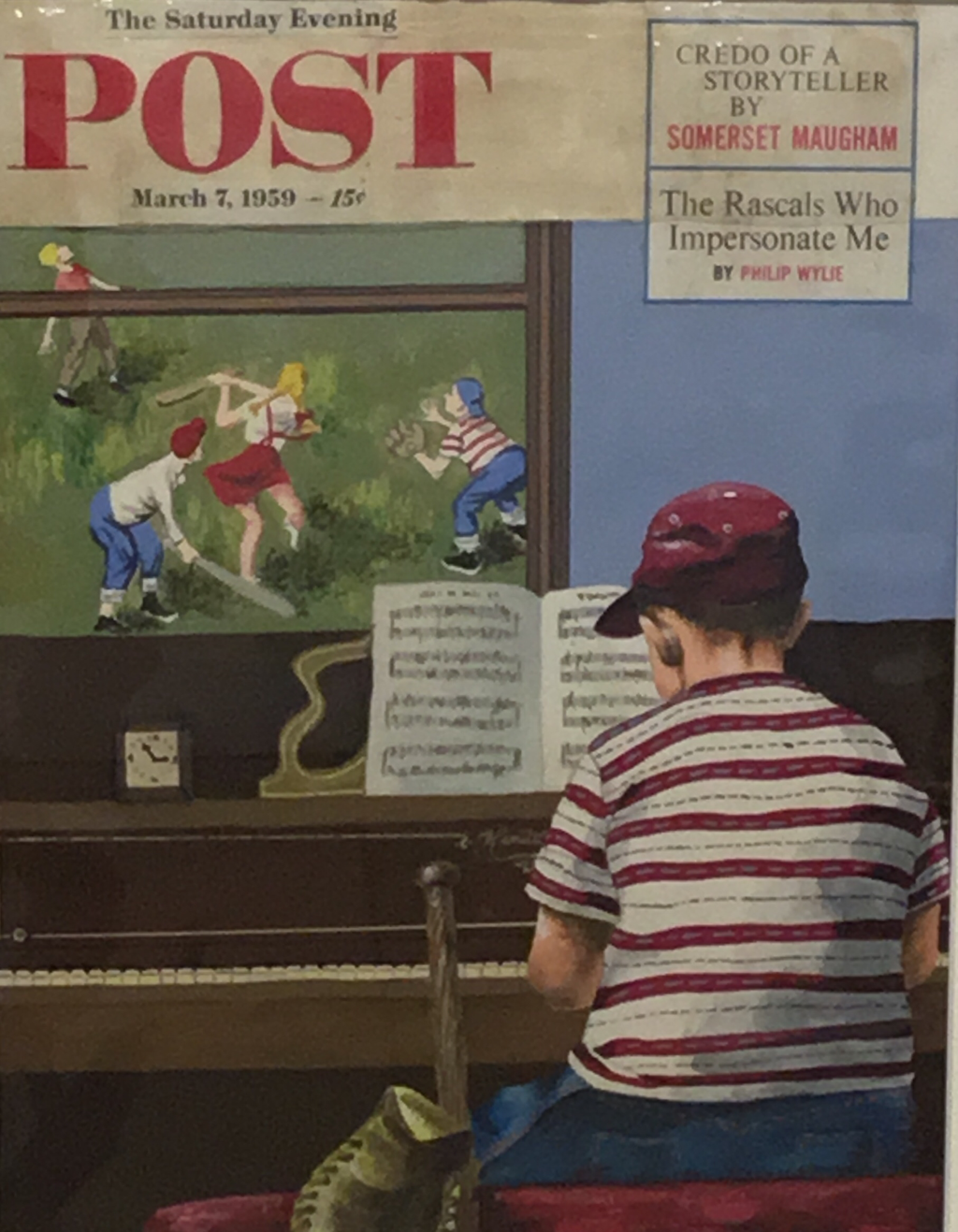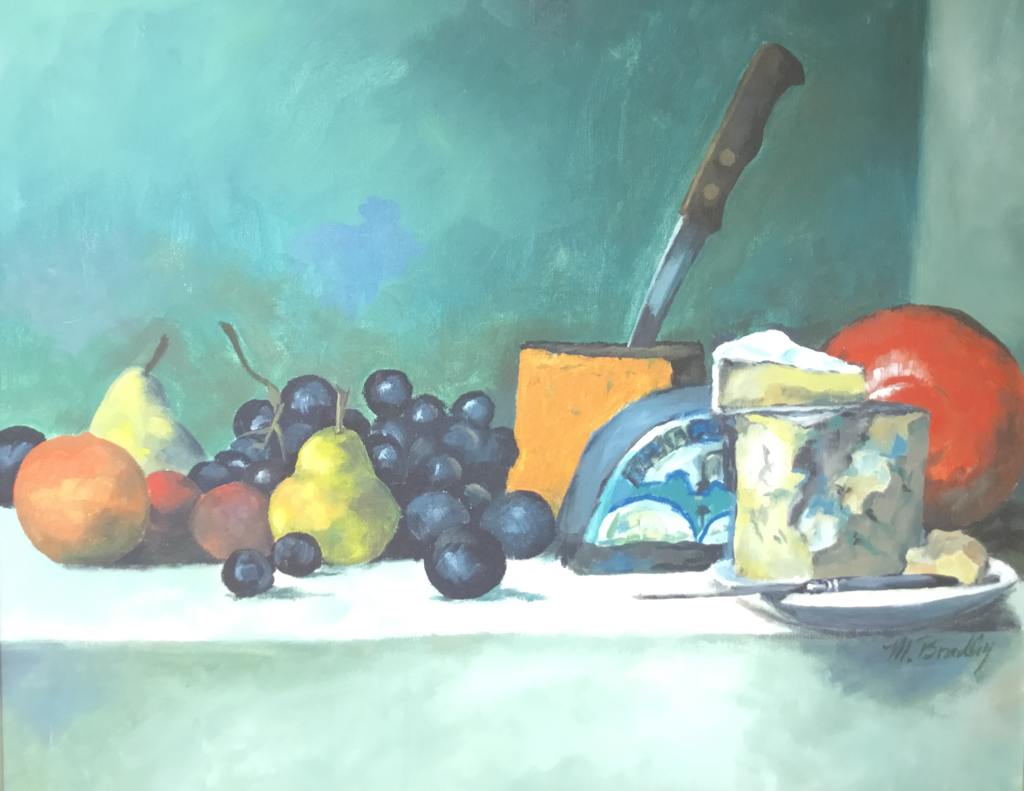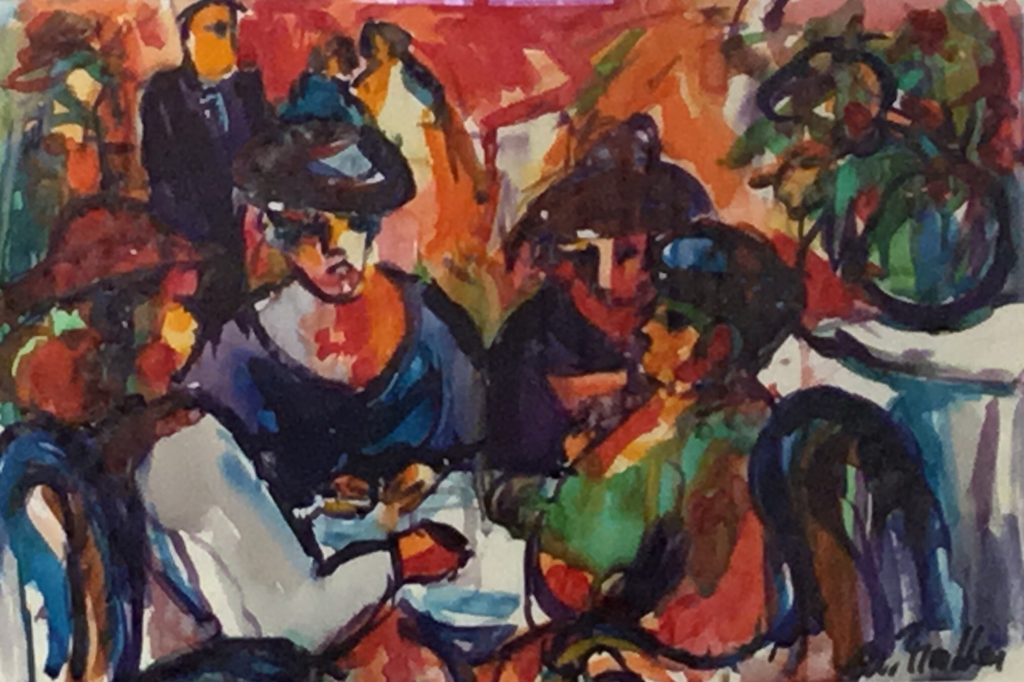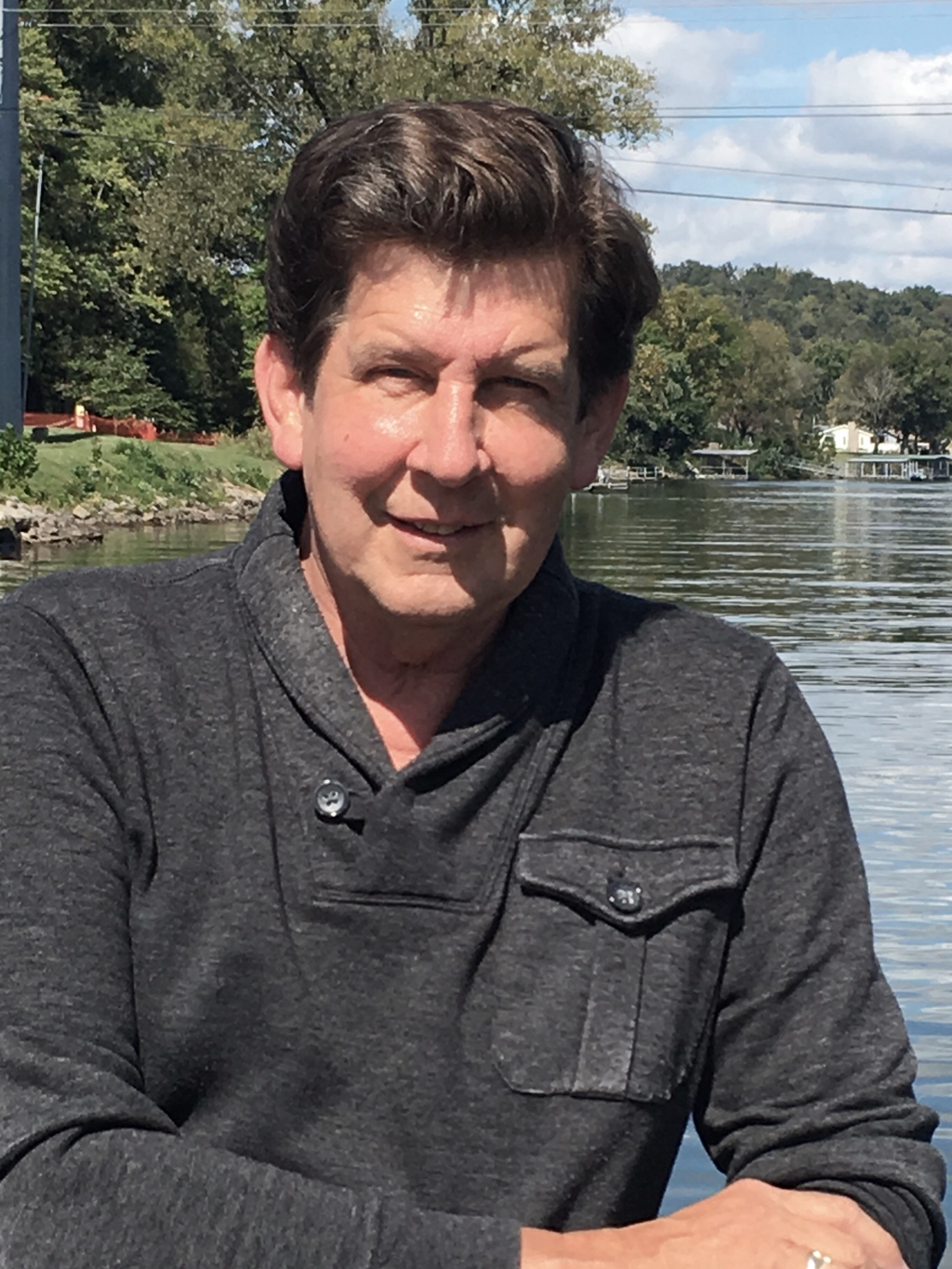|
It’s tempting to celebrate the eightieth birthday of a prolific and renowned artist by taking a look back at her life’s work. And that’s perfectly fine with Marilynne Bradley. But what she really wants to do is talk about what’s next. Bradley turns 80 on April 12, and you are invited to one big birthday bash that evening at the Webster Arts Galley at Eden Seminary, where her latest exhibition “Transitions” is on display. A brief summary of Bradley’s career is impossible. Highlights include years as a commercial artist, teacher and nationally acclaimed painter. She is a member of the Webster Groves arts commission and an active participant in a variety of arts non-profits. She teaches watercolor every Wednesday evening at the Green Door Gallery in Old Webster, where she also displays her work. Watercolor is her preferred medium, but she’s comfortable in a wide range of media and genre. (That’s her mural on the west wall of Schnarr’s Hardware.) She has produced books, participates in about 25 shows a year around the country, and has received more awards, honors and signature letters than she cares to talk about. This fall she’ll be displaying a collection of her latest works - which take a very different stylistic direction - at the St. Louis Artists’ Guild. Oh, and she was a child prodigy on the cello, which got her a music scholarship to Washington University, where she studied chemistry with plans to pursue a medical degree before deciding to try her hand at art. My apologies for leaving a lot out here. The woman defies labels. “Transitions” is the perfect title for her current exhibition, because it captures the essence of her artistic career. Every piece on display can be seen and appreciated for what it is - but also how it laid the foundation for the next stage of her art. From her early commercial work (including a cover of the Saturday Evening Post) to her loose and fluid watercolors to her architectural works and her latest graphic, linear paintings there is a continuity to the creative energy that flows through and transforms her art. Central to Bradley’s approach to art is her background as a commercial artist. Even when she experiments with techniques, there is a certain no-nonsense practicality that drives her. “Before I begin, I already know what I’ve planned. It’s in my head. You have to have an idea; you have to have a deadline. So consequently, I work very fast and I know exactly what it’s going to be before I start. “So I can paint just like it’s a job, but I also know how to put real feeling into a picture. So in some ways I’m on both sides of the fence.” Bradley is a representational artist. She is inspired by what she sees in the real world. “I see something, then all of a sudden I want to recreate it. That’s what I like. So what I’m trying to do is experiment. I’m always curious, and the curiosity takes me in so many different directions.” But when she attended Washington University in the late ‘50s, the kind of art she wanted to make was not the style of the day. “This was the time of abstract and conceptual art. You weren’t supposed to actually look at anything. It was all supposed to come out of your mind. It wasn’t for me. I didn’t enjoy it, so I went into advertising and illustration. That was real, and that’s what I needed - how to make a real painting that actually looked like something.” About two years ago she bean creating a series of paintings that seemed to take a new direction. It began with a painting of a stairway. She grew fascinated with the lines and the geometry and applied that focus to more of her paintings, including landscapes and cityscapes. And though many of her followers thought it was something totally new for her, she describes it as revisiting a technique she’d experimented with years earlier.” “The first year nobody liked them. That happens. It takes a while for people to accept change. It didn’t bother me. I was doing it for myself. But then they started getting into shows, and I’ve started getting some awards for them, so maybe I’m going in a good direction. I’ll keep doing it until I get pulled in another direction.” Her advice to young artists is simple. “You need to paint every day, because what you’re doing is training your eye to see. So you come to see even the most trivial things in new ways. You see patterns in them rather than them just being objects. And they become pieces of art.” So, for Marilynne Bradley, this milestone year is a chance to celebrate with friends and rediscover works from her archives. But beyond reflecting on what she has done and where she has been, the fun for her is showing how every step and every direction she’s taken over the years has laid the groundwork for the next chapter. Transitions. And all the celebrations aren’t going to interrupt her work, because she’s got a lot more to do. “It’s curiosity that keeps me from getting stale and doing the same thing over and over again. Everything I do evolves into something else. Years ago I came to this point in my life when I thought, all right, I’ve come this far, it’s time to do whatever I want to do. I might never have another chance. Whatever comes by, I’m going to do it.” You can see more of Marilynne Bradley’s work in her books, Once Upon a Time in St. Louis and St. Louis Watercolor: The Architecture of a City as well as at Green Door Gallery and on her website, marilynnebradley.com.
0 Comments
Your comment will be posted after it is approved.
Leave a Reply. |
Patrick Murphy has worked in St. Louis radio and television for the past forty years. He has produced a variety of arts-related programs for for St. Louis public television, including the series "Arts America" and "Night at the Symphony". He currently serves on the Webster Groves arts commission and is an aspiring water colorist.
Archives
August 2018
Categories
All
|










 RSS Feed
RSS Feed